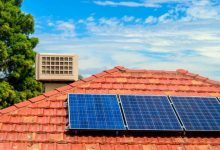The wheels of progress continue to turn, slowly, on the evolution of Australia’s grid, with the publication this week of the Energy Security Board’s consultation paper on moving to a two-sided wholesale electricity market.
The 47-page document, produced at the request of the COAG Energy Council, presents a “high-level discussion” on the benefits and opportunities of moving to a two-sided market, and how it might come about.
But what, exactly, is a two-sided wholesale electricity market? And will it really be good for consumers, or just sound like it?
In general terms, a two-sided market model involves direct interaction between suppliers and customers, each creating value for the other through an intermediary platform.
In terms of the National Electricity Market (NEM), this would mean “quantity and price inputs” to the grid from both consumers and producers of electricity, to facilitate “more efficient participation in the market by even small consumers like homes and small businesses.”
In the paper, the ESB describes the shift to a two-sided market – where consumers are encouraged to join the party, rather than go it alone with solar and storage – as the “clearest opportunity” from Australia’s low-carbon energy transition.
That’s because a lot of the hard work is already done, by the millions of Australian homes and businesses that have been investing in rooftop solar – and will likely follow suit with batteries – in a world-leading fashion.
Creating a two-sided energy market would also unlock data on consumer energy demand that is hidden ‘behind the meter’ and which is needed to help keep the power system reliable and secure, the ESB paper says.
The Australian Energy Market Operator agrees, and just two months ago launched the nation’s first detailed database on distributed energy resources, to log new rooftop solar, battery storage, electric vehicles and other equipment that has until now been largely invisible to the grid operator.
This capability has been considered critical to the effective management of the grid, which over the coming decades will likely source up to half of all its power from rooftop solar installed by households and businesses, and stored by solar batteries and batteries in electric vehicles.
Indeed, AEMO’s Electricity Statement of Opportunities notes customers already own 8.1GW of solar PV and in the next 20 years this could triple, residential battery storage could be six or seven times higher, and battery EVs could be 25 per cent of the vehicle fleet. And these are considered by many to be conservative estimates.
As the ESB paints it, the two-sided wholesale market of Australia’s future – the aim is for it to be in place after 2025 – would be one in which there is “full participation” of all consumers, be they “actively” or “passively” involved.

That is, customers with or without distributed energy resources (DER) would be actively involved in the demand for, and supply of, electricity, via technology that can actively control the way in which they can reveal their intentions in the market.
To read the full story on RenewEconomy sister site One Step Off The Grid, click here…
RenewEconomy and its sister sites One Step Off The Grid and The Driven will continue to publish throughout the Covid-19 crisis, posting good news about technology and project development, and holding government, regulators and business to account. But as the conference market evaporates, and some advertisers pull in their budgets, readers can help by making a voluntary donation here to help ensure we can continue to offer the service free of charge and to as wide an audience as possible. Thankyou for your support.










